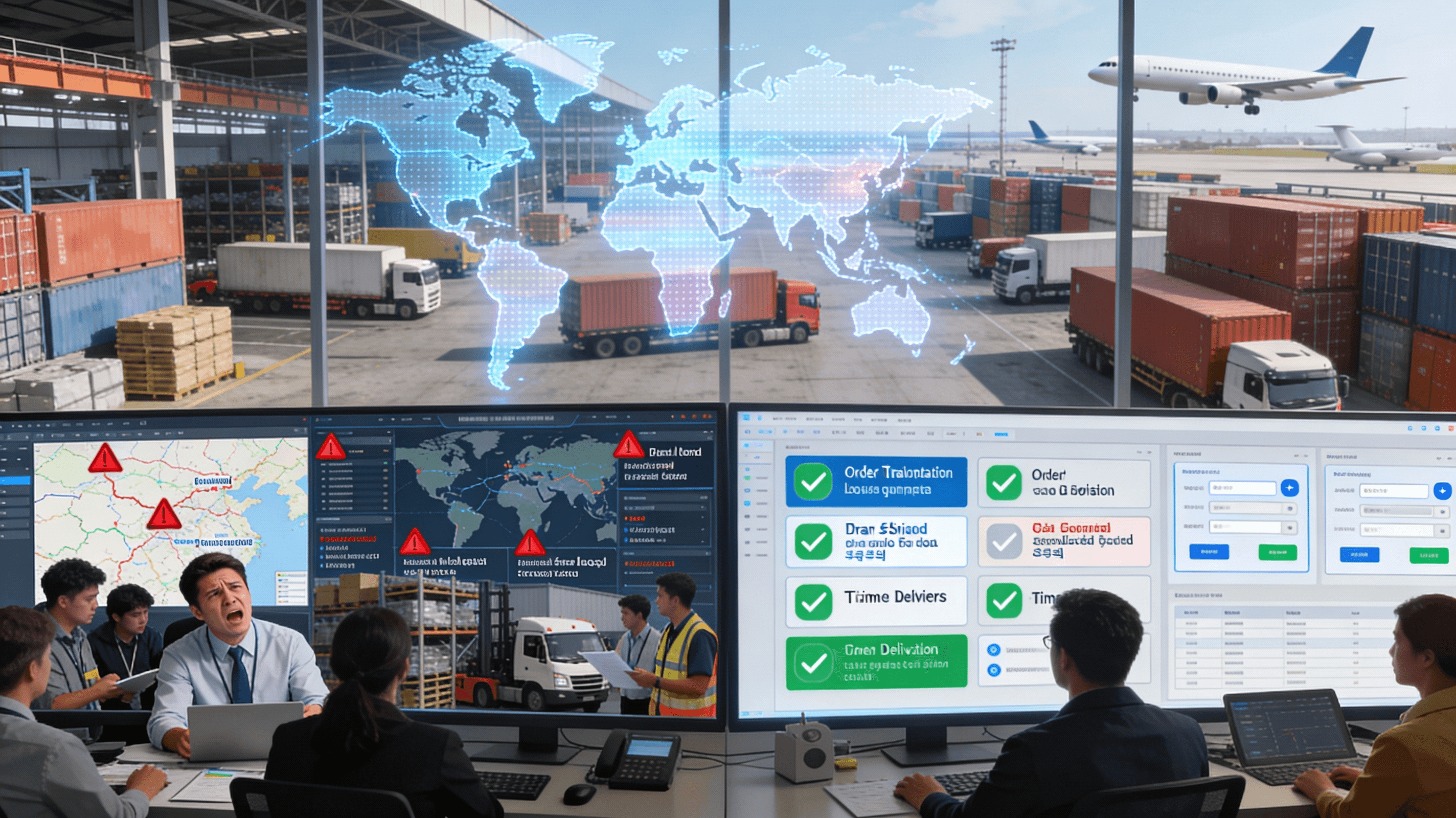Anti-Fragile Logistics: AI Systems That Grow Stronger from Disruption
Monday, 27 Oct 2025
|
Introduction: From Surviving Shocks to Thriving on Them
In a world where supply chain disruptions are the new normal, resilience—the ability to bounce back—is no longer sufficient for market leadership. The future belongs to anti-fragile logistics, a paradigm where systems not only withstand shocks but actively learn from them, emerging stronger, smarter, and more efficient after every crisis. This evolution is powered by advanced AI agents and machine learning models that analyze the DNA of each disruption, automate improvement cycles, and build structural advantages that competitors cannot replicate. For logistics CEOs, CXOs, and COOs, embracing anti-fragility means transforming disruptions from costly liabilities into invaluable learning opportunities, unlocking 30-40% gains in operational efficiency and securing a dominant market position in the face of unprecedented volatility.
This deep-dive analysis explores the core principles of anti-fragile logistics, dissecting the machine learning mechanisms—particularly reinforcement learning—that enable systems to self-improve through adversity. Drawing on insights from McKinsey and real-world models from AI pioneers, we will provide a strategic blueprint for designing, implementing, and scaling these adaptive systems. As disruptions are projected to escalate by 40% in 2025 due to climate and geopolitical instability, organizations that cultivate anti-fragility will not just survive; they will innovate, adapt, and ultimately, dominate the next era of logistics.
Beyond Resilience: The Strategic Shift to Anti-Fragility
For decades, the pinnacle of supply chain strategy was resilience—the capacity to absorb a shock and return to the original state of equilibrium as quickly as possible. This robust model, however, is fundamentally defensive; it treats disruptions as threats to be weathered. Anti-fragility, a concept popularized by Nassim Nicholas Taleb, describes a system that benefits from volatility, randomness, and stressors, evolving and growing stronger when exposed to them. In logistics, this translates to AI-driven systems that don't just recover from a port closure or supplier failure; they analyze the event's impact and automatically update their internal logic to be better prepared for the next one.
Think of it as a supply chain immune system. A merely resilient system is like wearing armor—it protects from harm but remains unchanged. An anti-fragile system is like a biological immune system that, after defeating a virus, develops antibodies, making it fundamentally stronger and better equipped to handle future infections. This shift moves the goal from "minimizing downtime" to "maximizing learning," turning every disruption into a free, real-world stress test that hardens the entire network.
The strategic implications are profound. While resilient competitors focus on restoring the status quo, anti-fragile leaders are already redesigning networks, diversifying suppliers, and optimizing inventory based on the lessons learned, creating an ever-widening competitive gap. As 67% of industry leaders predict AI will dominate supply chain decision-making by 2028, anti-fragility represents the ultimate expression of this autonomous future.
The Engine of Anti-Fragility: Machine Learning and Continuous Improvement Loops
At the heart of an anti-fragile logistics system is a powerful feedback mechanism driven by machine learning, particularly reinforcement learning (RL). RL agents learn optimal behaviors through trial and error, receiving "rewards" or "penalties" for their actions, much like a human operator learns from experience. When applied to a supply chain, this creates a continuous improvement loop that turns disruption data into adaptive intelligence.
This learning cycle unfolds in five automated steps:
Disruption as a Stimulus: The system detects an unplanned event—a sudden tariff, a grounded cargo plane, or a warehouse labor shortage—through real-time data ingestion from IoT sensors, news feeds, and partner APIs.
Autonomous Response: An AI agent, or a team of collaborating agents, immediately takes action. It might autonomously reroute a shipment, activate a pre-vetted secondary supplier, or adjust inventory levels at nearby distribution centers to compensate.
Outcome Measurement: The system meticulously tracks the results of the agent's actions against key performance indicators (KPIs). Did the rerouting strategy minimize cost and delivery delays? Was the alternate supplier able to meet quality and volume requirements? Was the impact on customer satisfaction positive or negative ?
Reward and Reinforcement: The RL model receives a reward signal based on the outcome. A successful strategy that maintained on-time delivery at a minimal cost increase generates a high reward, reinforcing the neural pathways that led to that decision. A poor outcome results in a penalty, teaching the model to avoid that strategy in similar future scenarios.
Model Update and System Evolution: The reward signal triggers an update to the AI agent's underlying model. The system has now "learned" from the disruption and is statistically more likely to make a better decision the next time a similar event occurs. Over thousands of such cycles, the entire logistics network becomes progressively more intelligent and adaptive.
This continuous loop ensures that the supply chain doesn't just recover; it evolves. Each disruption serves as a data point that refines its predictive accuracy, decision-making logic, and operational playbooks, making it measurably stronger.
Architectural Blueprint for an Anti-Fragile Logistics System
Building an anti-fragile system requires a modular, interconnected architecture designed for learning and adaptation. This blueprint consists of five critical layers working in synergy.
Data Ingestion and Contextualization Layer
This foundational layer acts as the system's sensory input, constantly absorbing high-velocity data from a multitude of sources: IoT sensors on containers, real-time traffic and weather APIs, geopolitical news feeds, social media sentiment, supplier performance dashboards, and internal TMS/WMS/ERP data. AI agents use natural language processing (NLP) and computer vision to contextualize this unstructured data, identifying signals that precede disruptions.
Digital Twin Simulation Layer
This layer serves as a safe, virtual sandbox—a high-fidelity digital replica of the entire supply chain. When a disruption occurs and the system learns a new potential strategy, it can first test it within the digital twin to model its cascading effects without risking real-world assets. This allows for rapid, risk-free experimentation, accelerating the learning process.
AI Agent Orchestration Layer
This is the "brain" of the anti-fragile system, where a team of specialized AI agents collaborates to make decisions. A "Detection Agent" might first identify a disruption, passing the information to a "Scenario Agent" that runs simulations in the digital twin. An "Optimization Agent" then selects the best response, which is handed to an "Execution Agent" to implement. This multi-agent orchestration allows for sophisticated, parallel processing of complex problems.
Action and Execution Layer
This layer is the system's "hands," translating the agents' decisions into concrete actions by integrating directly with operational systems. It can automatically issue new purchase orders in an ERP, update routing instructions in a TMS, reallocate inventory in a WMS, or send proactive notifications to customers through a CRM, all without human intervention.
Feedback and Reinforcement Layer
The most critical layer for anti-fragility, this component closes the loop by monitoring the outcomes of every action taken and feeding that performance data back into the AI models. It calculates the "reward" signal for the reinforcement learning algorithms, ensuring that every experience—good or bad—contributes to the system's continuous improvement.
Real-World Manifestations: How Leaders Build Strength from Stress
Amazon's Self-Correcting Last Mile
Amazon's logistics network is a prime example of anti-fragility in action. When a delivery is delayed due to an unforeseen event like a road closure or vehicle breakdown, the system doesn't just log the failure. It captures granular data on the cause, the location, the time of day, and the effectiveness of the recovery action (e.g., dispatching a new driver). This data feeds back into its routing and resource allocation models, which are continuously retrained. As a result, the system learns to proactively avoid similar choke points or automatically assign backup capacity in areas with a high probability of such disruptions, making its last-mile network stronger with every delivery exception.
Walmart's Hurricane-Proof Inventory
Walmart famously uses machine learning to analyze historical sales data from periods before and after hurricanes. Its AI agents have learned that in addition to the expected run on water and batteries, sales of strawberry Pop-Tarts spike significantly during these events. Now, when a hurricane is forecast, its anti-fragile system automatically increases inventory of these specific items at stores in the storm's path. This is a system that has learned and adapted from past disruptions to not only maintain service but also capitalize on emergent demand patterns, turning a crisis into a revenue opportunity.
DHL's Adaptive Route Network
Global carriers like DHL use AI agents to constantly analyze the performance of their shipping lanes. When a disruption, like the 2024 Red Sea conflict, forces a rerouting, their systems collect massive amounts of data on the alternative routes—including transit times, customs delays, and costs. This information is used to update the risk scores and performance metrics for every lane in their network. A route that was once considered a secondary backup may be promoted to a primary option if it proves consistently reliable under stress, making the entire network more robust and diversified as a direct result of the disruption.
Deepen Your AI Strategy on Debales.ai
- Autonomous Rerouting AI: Instant Supply Chain Resilience 2025
- Self-Healing Supply Chains: AI Systems for Real-Time Disruption Resolution
- AI Agents for Scenario Planning and Supply Chain Simulation
- The AI Agent Maturity Assessment: Benchmarking Your Organization
- Multi-Agent Orchestration: Building Supply Chains That Think and Act Independently
Build Your Anti-Fragile Future with Debales.ai
Stop just surviving disruptions and start growing from them. Partner with debales.ai to deploy AI agents that learn from every challenge, turning your supply chain into an anti-fragile powerhouse.
Schedule a Resilience Strategy Session
Conclusion: The Ultimate Competitive Advantage in an Uncertain World
Anti-fragile logistics represents the next frontier of competitive advantage, moving beyond defensive resilience to create systems that actively thrive on chaos and uncertainty. By harnessing the power of machine learning and continuous improvement loops, logistics leaders can build supply chains that are not just robust, but intelligent, adaptive, and ever evolving. In a global landscape defined by perpetual disruption, the ability to grow stronger from adversity is not just a desirable trait—it is the very definition of market leadership.


